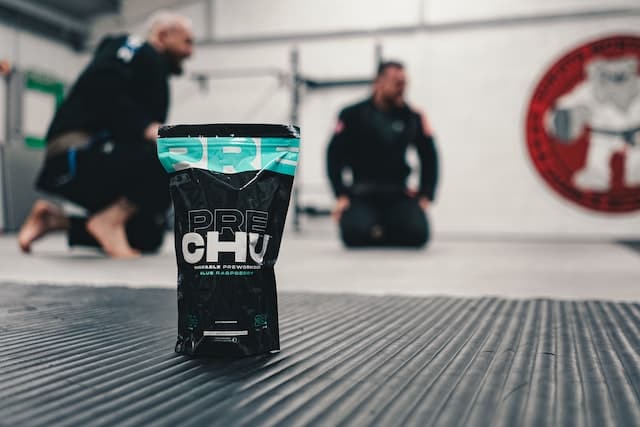You’ve done some research and you’re interested in giving creatine a shot. It’s an effective and harmless supplement. However, you may have found that creatine comes in a variety of forms. Creatine powder and pills are frequently put up against one another in a head-to-head comparison.
If you’re having trouble deciding which option to use, keep reading. Right now, we’re going to explain everything in detail.
Creatine Pills vs Powder: What Makes Them Different?
Creatine comes in pill form as well as powder, but they both serve the same purpose. You can get the benefits of creatine by either eating or drinking enough to meet your demands, at which point the organic acid in your muscles will be saturated.
- The main distinction is how quickly the body absorbs the powdered form of creatine. Alternatively, the nutritional value of a pill must be broken down by the body before it can be absorbed.
- This means that, given the same dosage, the effects of the powder would be identical to those of the tablets. Powder just expedites the delivery of the supplement’s nutritional benefits.
- Because of this impact, intravenous (IV) medicine administration is common in hospitals. Medications administered by IV are absorbed quickly because they bypass the digestive system and go straight to the blood. Even while powders can’t compare to the speed and efficiency of an IV, the idea is the same.
Price Difference: Pills vs Powder
As an added bonus, creatine powder is less expensive than capsules. 500 grammes of creatine may be purchased for about $12 to $15, however the same amount of creatine in pill form would cost you twice or even three times as much.
Therefore, creatine powder is preferable for the majority of people. As an added bonus, it is faster and cheaper to absorb into your system than medications. The one drawback is the added effort required to combine the powder with a liquid. Again, for most people, the extra advantage that powders offer is well worth the effort.
What is Creatine?
Your body makes creatine because it is an organic acid. Three amino acids—arginine, glycine, and methionine—work together to do this. The majority of our body’s creatine supply is kept in our muscles, but little amounts are also kept in our organs like the liver, kidneys, and brain.
As our muscles can only absorb so much creatine through meals and our bodies’ natural production, it’s helpful to take a supplement. As a result of taking it, our muscle tissue is saturated. When this occurs, the body’s generation of ATP, the “life currency,” is increased.
The body’s need for ATP increases dramatically during activity, therefore it must ramp up production of the molecule swiftly. Phosphocreatine is the primary form in which creatine is stored in the body, therefore it is easy to see how this supplement could be useful.
WHERE DOES CREATINE COME FROM?
If you don’t take a supplement, you can get most of the creatine you need from the food you eat, especially red meat and fish. Moreover, the body may produce some on its own from the amino acids arginine, glycine, and methionine.
Is Creatine Supplementation Worth It?
- Why use a creatine supplement if our bodies can produce it naturally? That is a very valid query.
- It’s important to remember that your body can only store so much creatine. Creatine stores are only about 60-80% full on average, according to studies1, and this range varies greatly from person to person based on their diet. Because of this, you are probably not even close to the point of maximum creatine absorption.
- We can get those up to 100% by supplementing with one of the greatest forms of creatine. Now your muscles can do more work during resistance training since they have more energy. With less muscle exhaustion, you can train for longer and harder.
When Should I Take Creatine Powder for Maximum Results?
Today, everyone is curious about the optimal time to take creatine. Creatine supplements can often be consumed anytime you like. This is due to the fact that creatine does not have any noticeable effects right away.
On days when you plan to exercise, the best time to take it is either right before or right after your workout. Doing so will maximise the benefits of taking in creatine.
Take it whenever you choose on days when you aren’t working exercise. The most important thing is to be regular about taking it so that your body always has the nourishment it needs. Because creatine acts by building up in the system, consistency in intake is significantly more important than timing.
Where to Choose: Protein Powder or Creatine Powder
Protein powder and creatine powder may look the same, yet they serve very different functions in the human body. Creatine is a tripeptide, meaning it is made up of three different amino acids. Energy production is boosted, and there may be cognitive benefits as well. Amino acids are delivered through the protein found in protein powder (3). Amino acids, once ingested, help the body with several functions including:
To enhance and fix
Muscles need protein for growth and maintenance and for recovering from exercise. Creatine, on the other hand, helps us most while we’re actually working out. Protein powder can be taken whenever we like, but taking it before and after a workout might be especially helpful.
Taking protein powder before an exercise has been shown to improve performance and speed up the recovery time afterward. Recovering from exercise and avoiding muscle protein breakdown are both aided by taking a protein powder after exercise.

